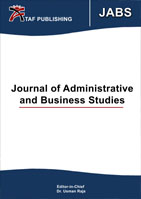

Abstract
This research aims to compare the relationship between Entrepreneurial Leadership (EL) and subordinate-rated Leader-Member Exchange (LMX) for female and male leaders (supervisors) in Mongolia, Taiwan and Thailand. By administering the same instrument to public sector officials of different Asian countries, a questionnaire was developed based on concepts from both LMX and entrepreneurial leadership. This study used convenient sampling process in which we selected public-sector units that we have connections with. Data were gathered from 948 employees, working in 158 units in Mongolian, Taiwan and Thailand’s public sector organizations. Due to the nature of nested data, Hierarchical Linear Modeling (HLM) was worked to investigate the sample of current study. The study detected the correlation of EL and LMX that this has stronger correlation for male supervisors than female supervisors of Mongolia and Taiwan. For Thailand, the result provides partial support. Whether entrepreneurial leadership can manage to a standard of leader-member exchange for leaders and subordinates depends on gender of them. The current study can identify the gender’s effect on the correlation between entrepreneurial leadership and leader-member exchange in a cross-cultural study. The findings imply that entrepreneurial leadership is an efficient leadership style in public sector organizations, and this leadership skill particularly works for male leaders. Recommendation for further research is to expand the sample population from both rural and urban public sector organizations of some Asian countries. |